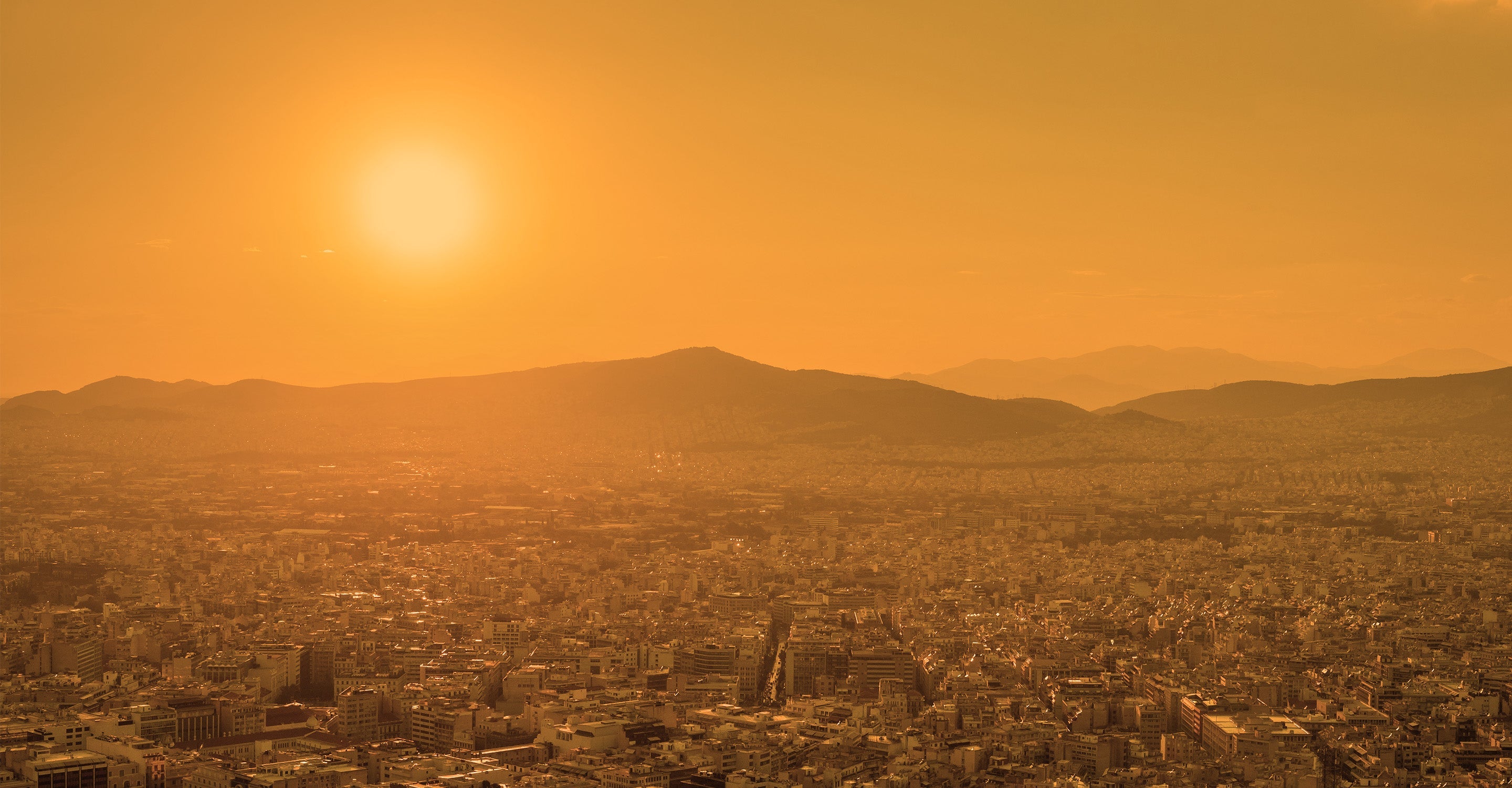Air quality in Shihezi
Air quality index (AQI) and PM2.5 air pollution in Shihezi
10.3K people follow this city

Shihezi Air Quality Map
Real-time Shihezi air pollution map
Weather
What is the current weather in Shihezi?
| Weather | Rain |
| Temperature | 41°F |
| Humidity | 85% |
| Wind | 5.8 mp/h |
| Pressure | 30 Hg |
live aqi city ranking
Real-time China city ranking
| # | city | US AQI |
|---|---|---|
| 1 | Zhangye, Gansu | 1123 |
| 2 | Jinchang, Gansu | 202 |
| 3 | Leshan, Sichuan | 176 |
| 4 | Jilin, Jilin | 175 |
| 5 | Tongzhou, Beijing | 175 |
| 6 | Chaoyang, Liaoning | 167 |
| 7 | Jingmen, Hubei | 165 |
| 8 | Beijing, Beijing | 162 |
| 9 | Tangjiazhuang, Hebei | 162 |
| 10 | Yangcun, Tianjin | 162 |
(local time)
SEE WORLD AQI RANKING3D animated air pollution map

live Shihezi aqi ranking
Real-time Shihezi air quality ranking
| # | station | US AQI |
|---|---|---|
| 1 | Ai Qing Poetry Hall | 59 |
| 2 | Yangguang xuexiao | 55 |
| 3 | Southern District Management Committee | 37 |
(local time)
SEE WORLD AQI RANKINGUS AQI
55
live AQI index
Moderate
Overview
What is the current air quality in Shihezi?
| Air pollution level | Air quality index | Main pollutant |
|---|---|---|
| Moderate | 55 US AQI | PM2.5 |
| Pollutants | Concentration | |
|---|---|---|
| PM2.5 | 14µg/m³ | |
| PM10 | 27µg/m³ | |
| O3 | 79µg/m³ | |
| NO2 | 2µg/m³ | |
| SO2 | 9µg/m³ | |
| CO | 500µg/m³ | |
PM2.5
x2.8
PM2.5 concentration in Shihezi is currently 2.8 times the WHO annual air quality guideline value
Health Recommendations
What is the current air quality in Shihezi?
| Sensitive groups should reduce outdoor exercise | |
| Close your windows to avoid dirty outdoor air GET A MONITOR | |
| Sensitive groups should wear a mask outdoors GET A MASK | |
| Sensitive groups should run an air purifier GET AN AIR PURIFIER |
Forecast
Shihezi air quality index (AQI) forecast
| Day | Pollution level | Weather | Temperature | Wind |
|---|---|---|---|---|
| Tuesday, Apr 23 | Moderate 78 AQI US | 80.6° 62.6° | ||
| Wednesday, Apr 24 | Moderate 70 AQI US | 73.4° 59° | ||
| Thursday, Apr 25 | Moderate 59 AQI US | 71.6° 53.6° | ||
| Today | Moderate 55 AQI US | 71.6° 53.6° | ||
| Saturday, Apr 27 | Good 49 AQI US | 62.6° 41° | ||
| Sunday, Apr 28 | Good 16 AQI US | 55.4° 44.6° | ||
| Monday, Apr 29 | Good 24 AQI US | 62.6° 48.2° | ||
| Tuesday, Apr 30 | Moderate 56 AQI US | 68° 50° | ||
| Wednesday, May 1 | Moderate 69 AQI US | 73.4° 59° | ||
| Thursday, May 2 | Moderate 63 AQI US | 78.8° 60.8° | ||
| Friday, May 3 | Moderate 77 AQI US | 80.6° 64.4° |
Interested in hourly forecast? Get the app
AIR QUALITY ANALYSIS AND STATISTICS FOR Shihezi
What is the level of air pollution in Shihezi?
Shihezi is a sub-prefecture-level city in Northern Xinjiang, People's Republic of China. It is as far away from the coast as any other place on earth in the Gobi Desert. According to a census taken in 2010, it has a population of 380,130 inhabitants. Textile and food production dominate the economy but the major source of prosperity comes from cotton production.
At the start of the second quarter of 2021, Shihezi was experiencing a period of “Moderate” air quality with a US AQI reading of 71. This classification follows the guidelines suggested by the world health organisation (WHO). The recorded concentrations of the various pollutants were as follows: PM2.5 - 21.5 µg/m³, PM10 - 84 µg/m³, ozone (O3) - 28 µg/m³, nitrogen dioxide (NO2) - 66.5 µg/m³, sulphur dioxide (SO2) - 66.5 µg/m³ and carbon monoxide (CO) - 1200 µg/m³. With figures such as these, the advice given would be to close doors and windows to prevent the ingress of dirty air into the home. Those of a sensitive disposition should avoid venturing outside until the air quality improves. A quick check at the table at the top of this page will be helpful.
Does the level of air pollution vary throughout the year in Shihezi?
As the level of air pollution depends on many factors, the quality can vary throughout the day.
It is affected by many factors over the course of a year.
On studying the latest figures released by IQAir.com on their website, we can see that for 8 months of the year Shihezi was coping with “Moderate” quality air with readings between 12.1 and 35.4 µg/m³. This covered the period of time from the start of spring in March to the end of autumn in October. During November, the quality was slightly worse with a reading of 40.6 µg/m³ which classified it as being “Unhealthy for sensitive groups”. Worsening once more during December and January, the air quality was then classified as “Very unhealthy” with 190.1 and 167.2 µg/m³, respectively. During February the air quality improved slightly when it was classed as being “Unhealthy” with a figure of 109 µg/m³.
Looking back over previous years, it can be seen that overall the pollution level is fairly stable. In 2017 when records were started, Shihezi recorded a level of 60.6 µg/m³. The following year it was 61.3 µg/m³ and in 2019 it was 63.3 µg/m³. 2020 showed an improvement when the figure was shown to be 57.5 µg/m³, but this was possibly due to the restrictions imposed because of the COVID-19 pandemic.
What are the sources of Shihezi’s polluted air?
Most of the air pollution in and around Shihezi seems to come from the use of poor quality coal used in power stations and for domestic use as a source of fuel for cooking and heating the homes. Emissions from the various industrial zones have also played a part in the pollution levels.
The warmer winters have higher temperatures, which are conducive to the formation of an inversion layer, which increases humidity and reduces wind speed, which helps to create fog, which leads to the rapid growth of fine particles and the generation of haze. At the same time, cold air during the heating period with little precipitation, and long duration of calm weather and light winds are not conducive to the diffusion of pollutants. The continuous accumulation of pollutants has increased the pollution levels.
What is being done to improve the air quality in Shihezi?
A total of 440.5 MW generating units have been shut down in small thermal power enterprises; 600,000 tons/year cement clinker production lines have been eliminated and also shut down. The capacity of assembly machines for desulphurisation, low-nitrogen combustion and out-of-scale machines increased from 46.1 per cent and 43.9 per cent respectively. The denitration of cement clinker production lines also reached 100 per cent. Implementing the full closure of electric coal yards was also recommended. All power, cement, electrolytic aluminium, industrial silicon and other waste gas emission companies in the city have installed online monitoring equipment.
The operation rate of corporate pollution prevention facilities is 100 per cent, and 100 per cent of pollutants are discharged when standards have been reached and not before. The mechanical cleaning rate of urban roads is over 90 per cent. The urban area (including Beiquan Town) has a natural gas penetration rate of 98.5 per cent and a central heating rate of 98.5 per cent. An oil fume purification facility was installed in 1,500 catering businesses in the city.
Comprehensive strengthening of environmental supervision capabilities has been instigated and the establishment of a pollution source monitoring centre has been newly approved. 3 million yuan has been invested to build and operate a pollution source monitoring network platform, and a further 2.6 million yuan in environmental monitoring equipment, also the addition of 2 new ambient air automatic monitoring stations, and 1 million yuan has been invested to upgrade the pollution source monitoring centre. At present, 58 enterprises have installed 212 sets of online monitoring facilities, and the number of installed sets has doubled.
Since these introductions have been in place and became established, the air quality in Shihezi City has continued to maintain excellent standards. The annual average concentrations of PM10, sulphur dioxide, and nitrogen dioxide have been steadily lower than the national level II standards, and the amount of dust reduction has been lower than the autonomous region's control indicators. At the end of this, the annual average concentration of various pollutants had decreased to varying degrees, and sulphur dioxide decreased by 17.6 per cent; nitrogen dioxide dropped by 29.8 per cent; PM10 dropped by 19.2 per cent. The environmental quality has gradually improved and remained basically stable.
How dangerous is polluted air to our health?
Even healthy people can be affected by polluted air. The risk of adverse effects depends on your current health status, the pollutant type and concentration, and the length of your exposure to the polluted air.
High levels of air pollution can cause immediate effects. They can aggravate respiratory illnesses and cardiovascular problems are exacerbated. The heart and lungs come under increased stress as they have to work so much harder in order to supply the body with the required levels of oxygen.
Long-term exposure leads to accelerated ageing of the lungs which then leads to loss of capacity and scarring of the tissue. The development of diseases such as asthma, bronchitis, emphysema, and possibly cancer are made easier under these conditions.
Shihezi air quality data attribution
1 Data source





